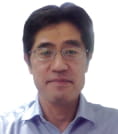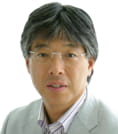- JST Home
- /
- Strategic Basic Research Programs
- /
 CREST
CREST- /
- Research Director/
- Large-scale genome synthesis and cell programming/
- [Genome programming] Year Started : 2020
[Genome programming] Year Started : 2020
Norikazu Ichihashi
Development of a self-regenerative artificial genome replication-transcription-translation system
Grant No.:JPMJCR20S1
Research Director
Norikazu Ichihashi

Professor
Graduate School of Arts and Sciences
The university of Tokyo
Collaborator
| Kazuhiro Maeda | Associate Professor Faculty of Computer Science and Systems Engineering Kyushu Institute of Technology |
Outline
We develop a self-regenerative artificial DNA genome replication, transcription, and translation system in this project. For this purpose, we have developed a simplified DNA replication system and the evolutionary optimizing method of genome sequence. A self-reproducing artificial cell will be within reach after this project.
Jun Kitano
Genomic basis of speciation
Grant No.:JPMJCR20S2
Research Director
Jun Kitano

Professor
National Institute of Genetics
Research Organization of Information and Systems
Collaborator
| Satoshi Ansai | Professor Faculty of Environmental, Life, Natural Science and Technology Okayama University |
| Toshiya Ando | Project-specific Associate Professor the Hakubi Center for Advanced Research Kyoto University |
| Kazunori Yamahira | Professor Tropical Biosphere Research Center University of the Ryukyus |
Outline
Speciation is a continuous process by which reproductive isolation is being established. Using natural populations, we investigate whether chromosomal structural changes that reduce recombination rates promote speciation. We also aim at establishing genome-editing tools for manipulating chromosomal structures.
Yasubumi Sakakibara
Genomic-style feature extraction and de novo design and synthesis of DNA sequence using deep learning
Grant No.:JPMJCR20S3
Research Director
Yasubumi Sakakibara

Professor
School of Frontier Engineering
Kitasato University
Collaborator
| Masakazu Kataoka | Special Appointed Professor Graduate School of Science and Technology Shinshu University |
| Kenji Miyamoto | Professor Faculty of Science and Technology Keio University |
Outline
We develop a method for designing and generating a primary DNA sequence using deep learning technology, synthesize and transform the DNA into cells, and verify its functional expression. We propose a novel sequence feature, called genomic style, inspired by image classification and develop a method to convert the style of DNA while retaining the genetic information. Next, we establish a DNA synthesis platform using Bacillus subtilis and apply the DNA design and synthesis to functional modifications such as heat resistance and stability, targeting gene clusters of PET degrading enzymes and their metabolic pathways.
Shino Suzuki
Insight into ancient life: Lessons from metabolic and genetic functions in early Earth analgue sites.
Grant No.:JPMJCR20S4
Research Director
Shino Suzuki

Chief Scientist
Pioneering Research Institute
RIKEN
Collaborator
| Yoshihiro Shimizu | Team Director Center for Biosystems Dynamics Research RIKEN |
Outline
What were the features of ancient life? This project aims to illustrate the view of ancient life by synthesizing the energy metabolism and genetic systems that were seen in the microbial life living at the early Earth analog sites. Knowledge gained through the combinational studies of systems biology and synthetic biology should expand our understanding of ancient life and the early evolution, and will further contribute to construing artificial cells in the future.
Ichiro Hiratani
Deciphering the design principles of the genome through the analysis of its potential instability
Grant No.:JPMJCR20S5
Research Director
Ichiro Hiratani

Team Director
Center for Biosystems Dynamics Research
RIKEN
Collaborator
| Hirohisa Kyogoku | Associate Professor Graduate School of Agricultural Science Kobe University |
| Shu Kondo | Assocate Professor Faculty of Advanced Engineering Tokyo University of Science |
| Atsuko Shirai | Research Scientist Pioneering Research Institute RIKEN |
| Takashi Sumikama | Junior Associate Professor Graduate School of Biostudies Kyoto University |
| Shin-ichiro Takebayashi | Professor graduate school of bioresources Mie University |
Outline
This study aims to reveal the basis for the dynamic regulation of chromosomes, with a focus on understanding the sources of potential instability of the mammalian chromosomes. We will conduct a comprehensive screening for factors involved in regulating the nuclear compartments, clarify the developmental and cell-cycle dynamics of TADs and nuclear compartments, and attempt to artificially reconstitute nuclear compartments. We will also explore the molecular mechanisms that suppress chromosome aneuploidy, identify difficult-to-replicate genomic regions, and explore their relationship to aneuploidy. In parallel, we aim to improve the resolution of our single-cell genome-wide sequencing technology and pave the way for single-cell multi-omics analysis.
Sachihiro Matsunaga
Innovation of artificial photosynthetic animal cells
Grant No.:JPMJCR20S6
Research Director
Sachihiro Matsunaga

Professor
Graduate School of Frontier Sciences
University of Tokyo
Collaborator
| Akihisa Osakabe | Tenure Track Associate Professor Graduate School of Science Chiba University |
| Keishi Osakabe | Professor Graduate School of Technology, Industrial and Social Sciences Tokushima University |
| Yuuko Satou | Associate Professor Medical Institute of Bioregulation Kyushu University |
| Hidenori Nishihara | Associate Professor Faculty of Agriculture Kindai University |
Outline
We will establish animal cell lines to stably maintain the plant genome through the genome transfer using cell engineering techniques. We will investigate the dynamics of the transferred genome and try to express the photosynthesis-related genes. Innovating the knock-in technique of long DNA and light-specific gene regulation, we will aim to activate the photosynthesis in animal cells.













